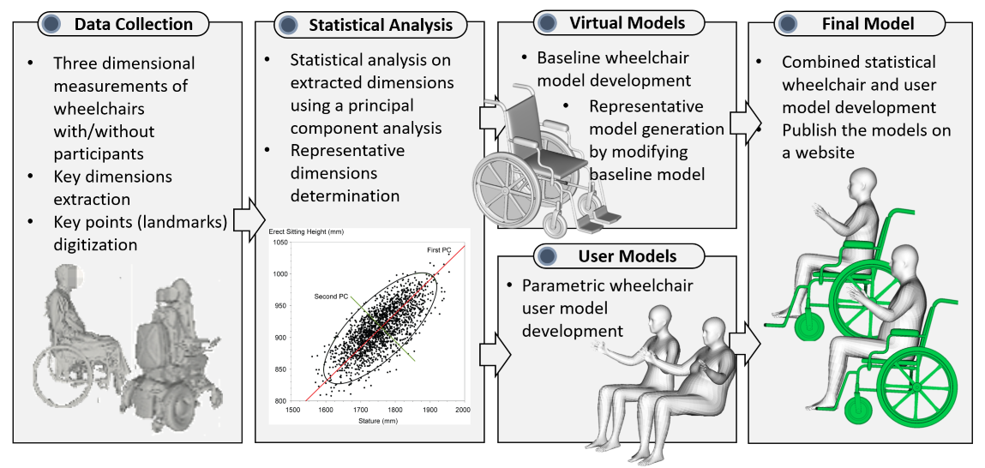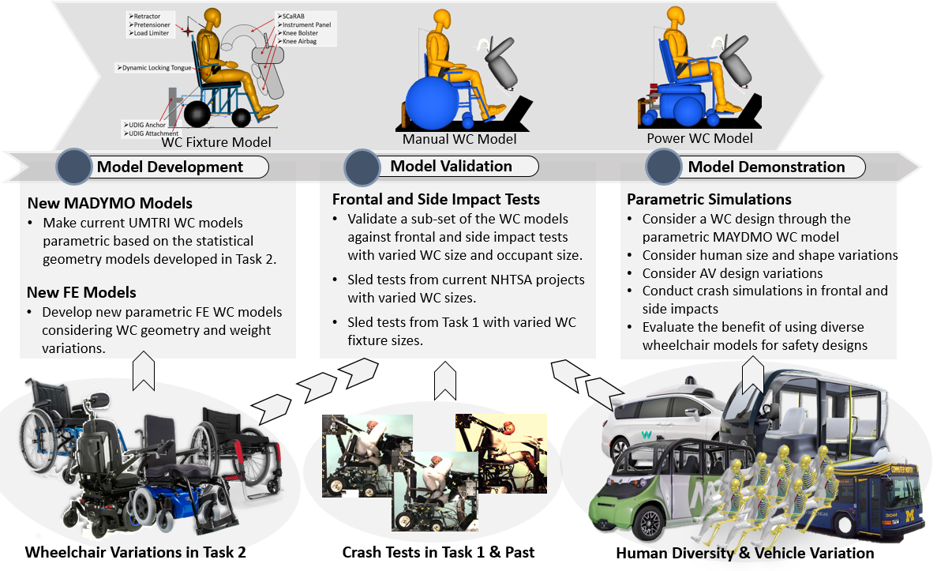Sponsor: National Institute for Disability, Independent Living, and Rehabilitation Research (NIDILRR)
Dates: September 2022 to August 2025
Researchers: Kathleen D. Klinich, Jingwen Hu, Miriam Manary, Kyle Boyle, Nichole Orton, Daniel Park, Matthew Reed, Brian Eby, Jennifer Bishop
The advent of automated vehicles (AVs) means that vehicle manufacturers have the opportunity to integrate wheelchair seating stations from the beginning of the design process. For ethical and liability reasons, manufacturers want to provide an equitable level of safety for all passengers, including occupants seated in wheelchairs.
Because wheelchair geometries vary more than a single vehicle seat geometry, design of airbags and seatbelts for occupants seated in wheelchairs is challenging. This study will develop a set of physical and digital tools that can represent the diversity of wheelchair 3D geometries, which will help manufacturers design vehicles with better accommodation and safety for wheelchair-seated occupants. Research tasks will include 1) Development of test fixtures representing large and small wheelchairs for use in dynamic physical testing of occupant protection systems. 2) Formation of a virtual wheelchair fleet to facilitate geometric design of wheelchair seating stations. 3) Creation of computational models representing wheelchair test fixtures and a fleet of production wheelchairs to allow virtual design of occupant protection systems, and use such models to evaluate the benefit of additional test fixtures on safety improvement for wheelchair-seated occupants. The figures below outline the process being used to develop the virtual wheelchair fleet and parametric compuational models.


